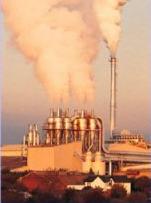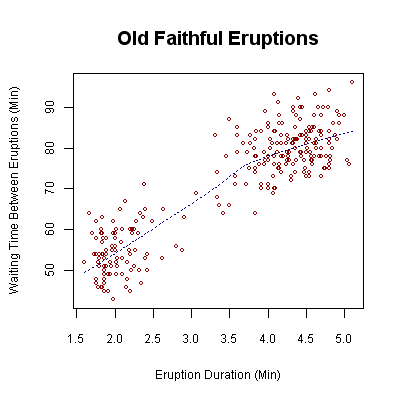|
Atmospheric Dispersion Modeling
Atmospheric dispersion modeling is the mathematical simulation of how air pollutants disperse in the ambient atmosphere. It is performed with computer programs that include algorithms to solve the mathematical equations that govern the pollutant dispersion. The dispersion models are used to estimate the downwind ambient concentration of air pollutants or toxins emitted from sources such as industrial plants, vehicular traffic or accidental chemical releases. They can also be used to predict future concentrations under specific scenarios (i.e. changes in emission sources). Therefore, they are the dominant type of model used in air quality policy making. They are most useful for pollutants that are dispersed over large distances and that may react in the atmosphere. For pollutants that have a very high spatio-temporal variability (i.e. have very steep distance to source decay such as black carbon) and for epidemiological studies statistical land-use regression models are also used. ... [...More Info...] [...Related Items...] OR: [Wikipedia] [Google] [Baidu] |
Code Of Federal Regulations
In the law of the United States, the ''Code of Federal Regulations'' (''CFR'') is the codification of the general and permanent regulations promulgated by the executive departments and agencies of the federal government of the United States. The CFR is divided into 50 titles that represent broad areas subject to federal regulation. The CFR annual edition is published as a special issue of the '' Federal Register'' by the Office of the Federal Register (part of the National Archives and Records Administration) and the Government Publishing Office. In addition to this annual edition, the CFR is published online on the Electronic CFR (eCFR) website, which is updated daily. Background Congress frequently delegates authority to an executive branch agency to issue regulations to govern some sphere. These statutes are called "enabling legislation." Enabling legislation typically has two parts: a substantive scope (typically using language such as "The Secretary shall promulgate ... [...More Info...] [...Related Items...] OR: [Wikipedia] [Google] [Baidu] |
Free Convective Layer
In atmospheric sciences, the free convective layer (FCL) is the layer of conditional or potential instability in the troposphere. It is a layer in which rising air can experience positive buoyancy (PBE) so that deep, moist convection (DMC) can occur. On an atmospheric sounding, it is the layer between the level of free convection (LFC) and the equilibrium level (EL). The FCL is important to a variety of convective processes and to severe thunderstorm forecasting. It is the layer of instability, the "positive area" on thermodynamic diagrams where an ascending air parcel is warmer than its environment. Integrating buoyant energy from the LFC to the EL gives the amount of convective available potential energy (CAPE), an estimate of the maximum energy available to convection. The depth of the FCL is expressed by the formula: : FCL = ZEL - ZLFC or : FCL = PEL - PLFC Deep, moist convection is essentially a thunderstorm or thundercloud, although some such convection does not produce ... [...More Info...] [...Related Items...] OR: [Wikipedia] [Google] [Baidu] |
Tropopause
The tropopause is the atmospheric boundary that demarcates the troposphere from the stratosphere; which are two of the five layers of the atmosphere of Earth. The tropopause is a thermodynamic gradient-stratification layer, that marks the end of the troposphere, and lies approximately above the equatorial regions, and approximately above the polar regions. Definition Rising from the planetary surface of the Earth, the tropopause is the atmospheric level where the air ceases to become cool with increased altitude, and becomes dry, devoid of water vapor. The tropopause is the boundary that demarcates the troposphere from the stratosphere, and is the part of the atmosphere where there occurs an abrupt change in the environmental lapse rate (ELR), from a positive rate in the troposphere to a negative rate in the stratosphere. The ELR indicates the lowest level at which the lapse rate decreases to 2°C/km or less, provided that the average lapse-rate, between that level and all othe ... [...More Info...] [...Related Items...] OR: [Wikipedia] [Google] [Baidu] |
Convective Boundary Layer
In physics and fluid mechanics, a boundary layer is the thin layer of fluid in the immediate vicinity of a bounding surface formed by the fluid flowing along the surface. The fluid's interaction with the wall induces a no-slip boundary condition (zero velocity at the wall). The flow velocity then monotonically increases above the surface until it returns to the bulk flow velocity. The thin layer consisting of fluid whose velocity has not yet returned to the bulk flow velocity is called the velocity boundary layer. The air next to a human is heated resulting in gravity-induced convective airflow, airflow which results in both a velocity and thermal boundary layer. A breeze disrupts the boundary layer, and hair and clothing protect it, making the human feel cooler or warmer. On an aircraft wing, the velocity boundary layer is the part of the flow close to the wing, where viscous forces distort the surrounding non-viscous flow. In the Earth's atmosphere, the atmospheric boun ... [...More Info...] [...Related Items...] OR: [Wikipedia] [Google] [Baidu] |
Capping Inversion
A capping inversion is an elevated inversion layer that caps a convective planetary boundary layer. The boundary layer is the part of the atmosphere which is closest to the ground. Normally, the sun heats the ground, which in turn heats the air just above it. Thermals form when this warm air rises into the cold air (warm air is less dense than cold air), a process called convection. A convective layer such as this has the potential for cloud formation, since condensation occurs as the warm air rises and cools. An inversion occurs when the normal temperature (warm air below, cold air above) profile is reversed, creating a stable configuration of dense, cold air sitting below lighter, warm air. An elevated inversion layer is thus a region of warm air above a region of cold air, but higher in the atmosphere (generally not touching the surface). A capping inversion occurs when there is a boundary layer with a normal temperature profile (warm air rising into cooler air) and the ... [...More Info...] [...Related Items...] OR: [Wikipedia] [Google] [Baidu] |
Planetary Boundary Layer
In meteorology, the planetary boundary layer (PBL), also known as the atmospheric boundary layer (ABL) or peplosphere, is the lowest part of the atmosphere and its behaviour is directly influenced by its contact with a planetary surface. On Earth it usually responds to changes in surface radiative forcing in an hour or less. In this layer physical quantities such as flow velocity, temperature, and moisture display rapid fluctuations (turbulence) and vertical mixing is strong. Above the PBL is the "free atmosphere", where the wind is approximately geostrophic (parallel to the isobars), while within the PBL the wind is affected by surface drag and turns across the isobars (see Ekman layer for more detail). Cause of surface wind gradient Typically, due to aerodynamic drag, there is a wind gradient in the wind flow ~100 meters above the Earth's surface—the surface layer of the planetary boundary layer. Wind speed increases with increasing height above the ground, starting f ... [...More Info...] [...Related Items...] OR: [Wikipedia] [Google] [Baidu] |
Isopleths
A contour line (also isoline, isopleth, or isarithm) of a function of two variables is a curve along which the function has a constant value, so that the curve joins points of equal value. It is a plane section of the three-dimensional graph of the function f(x,y) parallel to the (x,y)-plane. More generally, a contour line for a function of two variables is a curve connecting points where the function has the same particular value. In cartography, a contour line (often just called a "contour") joins points of equal elevation (height) above a given level, such as mean sea level. A contour map is a map illustrated with contour lines, for example a topographic map, which thus shows valleys and hills, and the steepness or gentleness of slopes. The contour interval of a contour map is the difference in elevation between successive contour lines. The gradient of the function is always perpendicular to the contour lines. When the lines are close together the magnitude of the gradie ... [...More Info...] [...Related Items...] OR: [Wikipedia] [Google] [Baidu] |
Plot (graphics)
A plot is a graphical technique for representing a data set, usually as a graph showing the relationship between two or more variables. The plot can be drawn by hand or by a computer. In the past, sometimes mechanical or electronic plotters were used. Graphs are a visual representation of the relationship between variables, which are very useful for humans who can then quickly derive an understanding which may not have come from lists of values. Given a scale or ruler, graphs can also be used to read off the value of an unknown variable plotted as a function of a known one, but this can also be done with data presented in tabular form. Graphs of functions are used in mathematics, sciences, engineering, technology, finance, and other areas. Overview Plots play an important role in statistics and data analysis. The procedures here can broadly be split into two parts: quantitative and graphical. Quantitative techniques are the set of statistical procedures that yield numeric or ... [...More Info...] [...Related Items...] OR: [Wikipedia] [Google] [Baidu] |
Preprocessor (CAE)
In computer aided engineering (CAE) a preprocessor is a program which provides a graphical user interface (GUI) to define physical properties. This data is used by the subsequent computer simulation Computer simulation is the process of mathematical modelling, performed on a computer, which is designed to predict the behaviour of, or the outcome of, a real-world or physical system. The reliability of some mathematical models can be dete .... Steps that are followed in Pre-Processing 1> The geometry (physical bounds) of the problem is defined 2> The volume occupied by the fluid is divided into discrete cells (meshing) 3> The physical modeling is defined - E.g. equations of motion + enthalpy + radiation + species conservation 4> Boundary conditions are defined. This involves specifying the fluid behavior and properties at the boundaries of the problem. For transient problems, the initial conditions are also defined. 5> The simulation is started and the equations are solv ... [...More Info...] [...Related Items...] OR: [Wikipedia] [Google] [Baidu] |
Mass Flow Rate
In physics and engineering, mass flow rate is the mass of a substance which passes per unit of time. Its unit is kilogram per second in SI units, and slug per second or pound per second in US customary units. The common symbol is \dot (''ṁ'', pronounced "m-dot"), although sometimes ''μ'' (Greek lowercase mu) is used. Sometimes, mass flow rate is termed ''mass flux'' or ''mass current'', see for example ''Schaum's Outline of Fluid Mechanics''. In this article, the (more intuitive) definition is used. Mass flow rate is defined by the limit: \dot = \lim_ \frac = \frac i.e., the flow of mass through a surface per unit time . The overdot on the is Newton's notation for a time derivative. Since mass is a scalar quantity, the mass flow rate (the time derivative of mass) is also a scalar quantity. The change in mass is the amount that flows ''after'' crossing the boundary for some time duration, not the initial amount of mass at the boundary minus the final amount at the boun ... [...More Info...] [...Related Items...] OR: [Wikipedia] [Google] [Baidu] |
Velocity
Velocity is the directional speed of an object in motion as an indication of its rate of change in position as observed from a particular frame of reference and as measured by a particular standard of time (e.g. northbound). Velocity is a fundamental concept in kinematics, the branch of classical mechanics that describes the motion of bodies. Velocity is a physical vector quantity; both magnitude and direction are needed to define it. The scalar absolute value (magnitude) of velocity is called , being a coherent derived unit whose quantity is measured in the SI (metric system) as metres per second (m/s or m⋅s−1). For example, "5 metres per second" is a scalar, whereas "5 metres per second east" is a vector. If there is a change in speed, direction or both, then the object is said to be undergoing an ''acceleration''. Constant velocity vs acceleration To have a ''constant velocity'', an object must have a constant speed in a constant direction. Constant direction cons ... [...More Info...] [...Related Items...] OR: [Wikipedia] [Google] [Baidu] |




